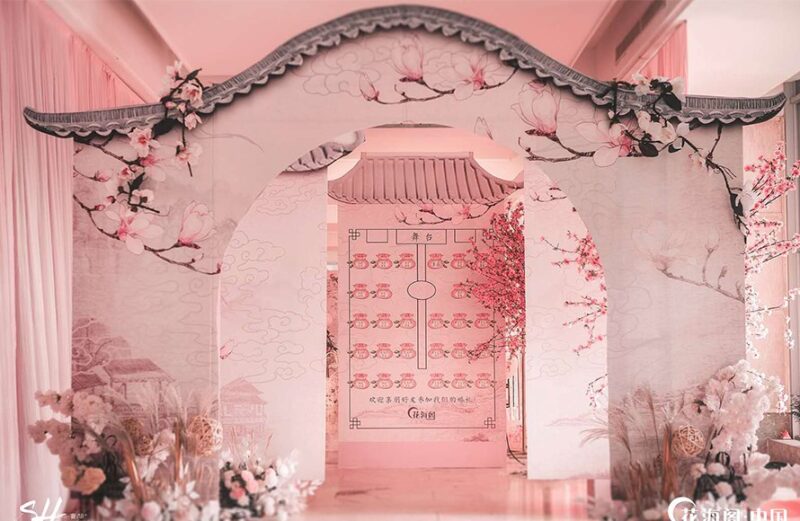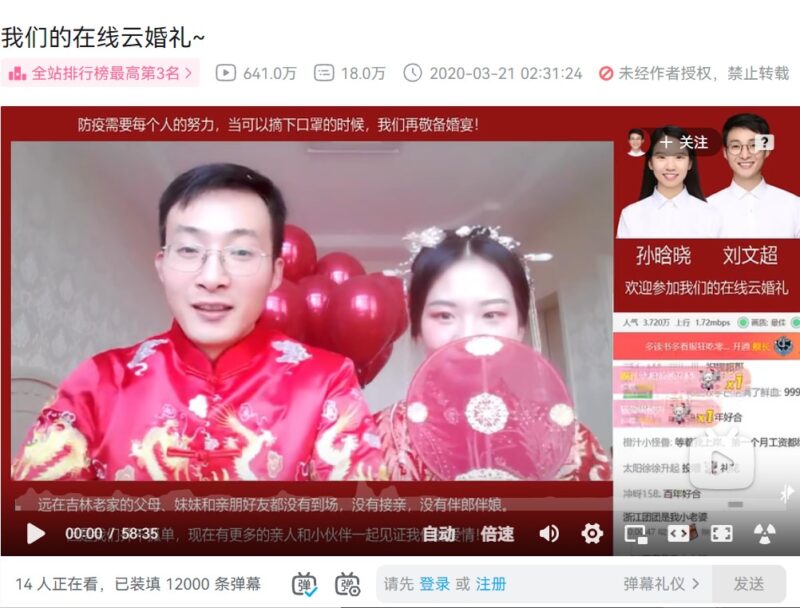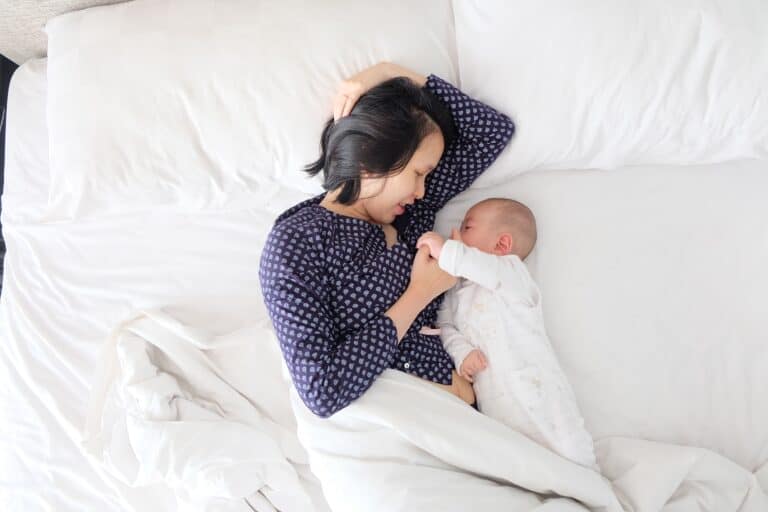Weddings in China are not only a celebration of love but also a testimony to the eyes of society, culture, and Chinese tradition. Due to the cultural significance of weddings in China, Chinese couples are willing to spend more on their big event. The average cost of a wedding per couple reached RMB 174,000 in 2021, which is 2.7 times that of 2015 according to Tencent’s “2021 Marriage Industry Insights White Paper”. The average cost of a wedding in China is 8.8 times Chinese couples’ average monthly income, and 42% exceed their budget. There are two trends in the Chinese wedding industry: more personalized wedding experiences and one-stop wedding services.
Expenses towards a Chinese wedding often include:
- Wedding planning
- Banquet arrangement and eight dishes food
- Costs of tea and snacks for tea ceremony
- Three wedding dresses
- Jewellery
- Renting or buying formal wear for wedding party
- Professional make-up for bride
- Limousines for wedding party
- Wedding photography during the event
- Couples photo-shoot
- VCD production
- Wedding scene arrangement
- Hiring a master of ceremony
- Hotel booking for remote members of wedding party
Complex Chinese wedding traditions and the surging demand of wedding planner
The traditional Chinese wedding process includes Three Letters and Six etiquettes (三书六礼). Three letters are letters used during six etiquettes, including betrothal letter (聘书), gift letter (礼书) and wedding letter (迎书). Six Etiquettes are the whole wedding process, including a proposal (纳采), birth date matching (问名), presenting betrothal gifts (纳吉), presenting wedding gifts (纳徵), picking an auspicious wedding date (请期) and the wedding ceremony. However, Chinese wedding nowadays has been modernized and usually starts with the stage of presenting wedding gifts, also known as Guo Da Li (过大礼). The groom’s parents will present gold jewelry such as dragon and phoenix bracelets (龙凤鈪) and other gifts to the bride.
How young Chinese couples celebrate their wedding
On the big day, the groom first picks up the bride in the early morning where the bride and the bridesmaids are waiting in her room. He and his groomsmen have to slip red envelopes (红包) through the bride’s door until the bridal party is satisfied enough to let him and the groomsmen into the room. Continuing the light-hearted mood, they usually play a series of wedding games set up by the bridesmaids. These challenges may include tasks like eating unpleasant food like wasabi, and requesting the groom to show his love for the bride through poetry, and other games. After the groom passes these challenges he can take the bride with him to the tea ceremony, usually hosted at the groom’s place. The tea ceremony is the final event of the morning.
The Chinese wedding banquet takes place at lunch and usually consists of 8 dishes as the Mandarin word for “8” implies good luck. The menu includes various symbolic foods to bless the couple. For example, suckling pig implies the bride’s purity and crispy fried chicken implies the blessing of giving birth to a baby soon.
From Guo Da Li, the reservation of the Chinese wedding banquet, the selection of the wedding company, to the arrangement of the whole wedding process, the Chinese wedding preparation is complex. Hence, the wedding planning industry has mushroomed. According to iiMedia research, 60% of couples tend to entrust wedding planners to handle wedding matters in one-stop, so that they can save time and effort but have a professional wedding experience at the same time.
Overview of the 4 core wedding industries in China: wedding dress, wedding photography, wedding ceremony, and the wedding banquet
The Chinese wedding dress market
While Western brides look for one perfect white dress, Chinese brides usually wear at least three dresses – one Chinese wedding gown (Qun Gua 裙褂), one wedding dress, and one dress used for the toast. 70% of Chinese brides rent their dresses. However, as there is a prevailing wealthier millennial generation who likes to showcase their status through their wedding outfits, 25% of the Shanghai brides and grooms spend RMB 30-60 thousand for dress customization, or RMB 15-25 thousand for renting international luxury dresses.

The Chinese wedding photography market
Secondly, wedding photography serves as an irreplaceable part of a Chinese wedding. According to Tencent Marketing Insight, each couple has an average shot of 4.1 wedding outfits in China. This prompts a huge and lucrative industry: the average cost of wedding photography accounts for 60% of the total monthly income of a couple. With the increasing consumer power, there is an increasing cost growth in different cities. For tier 1 cities, the average cost exceeds RMB 10,000, while the cost for tier 2-5 cities exceeds RMB 8,000. The May Day holiday is the peak season of wedding photography in China. Chinese couples then use these photos to send their wedding invitation via WeChat and to be shown on cards, and on screens during the wedding ceremony. Like many other elements of the Chinese wedding, this is also a way for couples to showcase their status and wealth on social media.
The Chinese wedding ceremony market
Thirdly, young couples value personalization and the quality of wedding ceremonies. Unlike the past generations who treat weddings as a ceremony to merely “complete”, the 90s treat weddings as a self-expression and a starting point for the remaining part of life’s journey. Thus, a personalized wedding ceremony merging the couples’ unique love story becomes a new demand. Professional wedding planners can design the theme and decoration of the wedding site according to the couple’s preference. According to Mob Tech, 67% of the consumers are pursuing theme-based wedding ceremonies, such as gaming, ACG, retro, and Guochao (国潮). The forms of weddings are also diversified. While Chinese traditional wedding is still mainstream, 33.8% of couples choose to mix traditional Chinese and Western elements. There are also couples choosing Western weddings or weddings with the features of Chinese ethnic minorities.
The Chinese wedding banquet market
In the past, the Chinese wedding banquet served as an important indicator of wealth and status, and thus families traditionally rent large spaces and up to hundreds of guests. However, nowadays even though the consumption power of the Chinese has increased, the demand for holding a large banquet has declined. According to iiMedia Research, only 37.5% of the consumers expressed that they would hold a large banquet, while 41.9% said that they would only celebrate with close relatives and friends. This also matches with the 2021 data from Forward-The Economist: 70% of couples hold a banquet with less than 30 tables. In terms of the price, more than 70% of the couples set the budget price for each table of the banquet below RMB 6,000. Nevertheless, the peak season of holding banquets has remained the same, namely the golden week during May Day and National Day. Couples and their families are able to organise wedding banquets and celebration events with more spare time.
Although Chinese weddings are still a chance for Chinese people to demonstrate their wealth, the younger generation put prioritizes personalization and uniqueness.

5.0 era of the Chinese Wedding Industry: How the internet connects the C-side and B-side to create a one-stop wedding service model
In traditional Chinese weddings before the information age, the limited access to information and geographic limitations reduced choices in wedding planning. Today, online wedding planning services are becoming more popular as they solve these pain points. In 2021 Q1, the monthly active users of Chinese wedding planning apps reached 17.264 million, showing a 44.6% y-o-y growth. The online wedding planning apps provide a one-stop wedding service, which serves as a middleman between upstream (traditional wedding industries) and downstream (consumers). For instance, professionals provide 1:1 online wedding preparation training to couples, bridal brands livestream the try-on of wedding dresses and online tutorials on wedding makeup. This upgrades the customer experience and provides more choices to couples.
Young Chinese couples have started to live-stream their weddings
Starting from 2020, many young couples have been embracing Livestream Weddings where they invite relatives and friends to join their big event virtually. Such Chinese wedding live stream apps include Hunlibo (婚礼播), inmuu (映目), yaopai (邀拍). During the livestream, the audience can send red packets and wedding candies to couples through the platform functions. They are also able to send blessings through livestream voice chat. Netizens on Weibo expressed that Livestream Wedding is a favourable option as it replaces a cumbersome wedding ceremony. Under the comments of the Weibo account “Xiao Shen’s mailbox”, netizens exclaimed that “many weddings are simply embarrassing as they are a large-scale formalism performance contest to showcase the highlight moment of the clan.” Without banquets, masters of ceremonies, or relatives that the couple is not familiar with, young couples can enjoy the intimate life moment witnessed by their relatives and friends with the aid of Livestream Wedding.

Key Takeaways from the Chinese wedding industry
- With the diverse demands of a huge population of couples, there is a high potential in the Chinese wedding industry. While each market is flourishing, a wedding planner as the middleman connecting all upstream and downstream markets is the new necessity. The one-stop wedding has become the mainstream of this industry.
- The main purpose of young couples’ wedding has changed from pleasing relatives to pleasing oneself. Traditional Chinese weddings can no longer meet millennials’ individual needs.
- The growth of Livestream Wedding indicates that e-commerce livestream has begun to enter the online wedding industry. To break into the industry, adapting to move down into lower-tier markets (Known as the “sinking” or Xiachen market下沉) is suggested. While the market of tier 1 and 2 cities is more saturated there is great potential in developing the market of tier 3-5 cities.
Author: Lydia Choi




